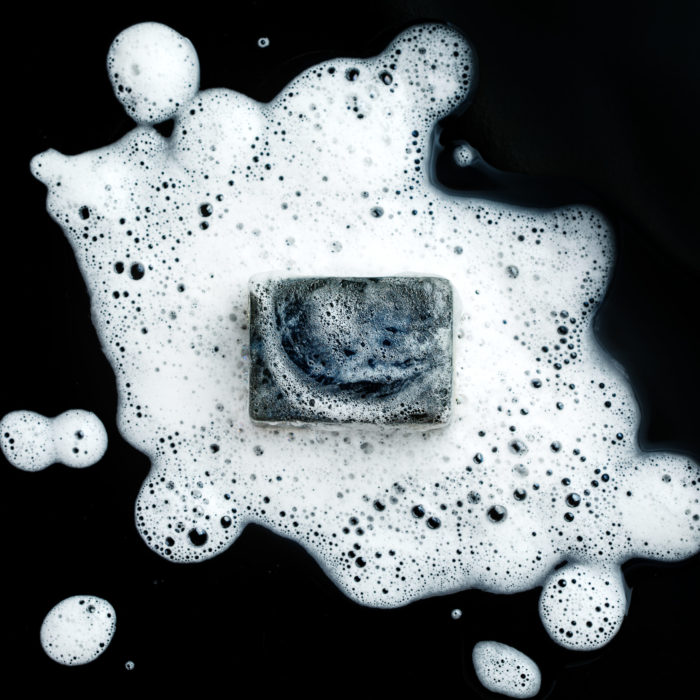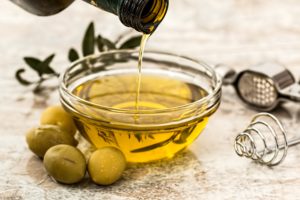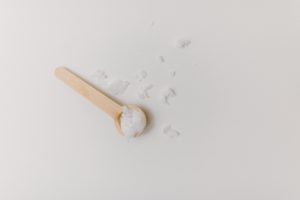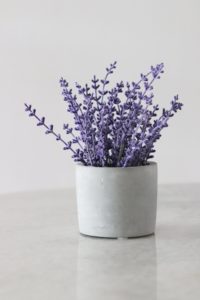Soap has been around for centuries, dating all the way back to 2800 BC. Soap has evolved in that time but the basics remain the same.
HOW IS SOAP MADE?
Believe it or not, it takes only two key ingredients to make soap: fats and an alkali. These two ingredients together combine with water to make a chemical reaction that results in the soap we use to wash our hands and bodies. According to Merriam-Webster, this is done through saponification, “the act, process, or result of making soap.” Most soaps use oils for their fat and lye or sodium hydroxide or potassium hydroxide as their alkali. Lye is created by boiling hardwood ashes with soft water such as rainwater. It is also commercially available at hardware stores and craft sites. There are a wide variety of oils used in soaps, including olive, coconut, palm kernel, cocoa butter and more.
When making cold-process soap, soapmakers must take into account which oil they use as each one has a specific saponification value to determine how much lye is needed in the recipe. According to Shelly Scott, CEO and Head Soapmaker at Pretty Bird Soapery, it is important to determine the desired percentage of superfat so the soap maintains some of the oil to help moisturize skin.
Scott explains that the soapmaking process takes approximately four to six weeks from beginning to end. First comes the measuring and mixing to ensure that the fats and lye have properly emulsified. During this step, scents and colors are also added to the mixture. Scents may be achieved by adding essential or fragrance oils. Colorants may be natural substances such as turmeric and indigo or oxides and micas, which are naturally occurring substances that are stabilized in the lab. Some soapmakers use commercial soap dyes to color their products. Once the soap has been properly mixed, it is covered and left overnight to harden. After the first 24 hours, the soap is removed from the molds and cut into bars and put on shelves to cure for at least four to six weeks. This allows the extra water to evaporate, producing a milder and longer lasting bar. At this point, the soap is ready to get to work!
BASIC SOAP INGREDIENTS
BATTLE OF THE SOAPS
Why is Standard Soap Better than Antibacterial Soap?
Soaps, hand washes and hand sanitizers may be labeled as antibacterial, antimicrobial, or antiseptic, indicating that they kill germs on contact. These soaps include additional ingredients that kill microbes not found in other soaps.
Sounds promising, especially in these pandemic times, right? Not so fast.
The Food and Drug Administration (FDA) encourages consumers to forego the antibacterial soaps in favor of traditional soap. There is not enough evidence to suggest that antibacterial soaps do a better job cleaning and protecting from diseases and infections. Furthermore, there are ingredients in some of these products, such as triclosan, which have caused concern among researchers regarding long-term health effects. The FDA and the Environmental Protection Agency (EPA) are collaborating on regulations and oversight of triclosan, which the EPA now manages as a pesticide. The research also indicates that triclosan may contribute to making bacteriaF resistant to antibiotics. This creates new strains of super bacteria and makes it hard to treat common bacterial infections with standard antibiotics.
Soap Versus Hand Sanitizer
The active ingredient in hand sanitizer is ethyl alcohol or isopropyl alcohol. These ingredients are effective in killing bacteria and viruses, including the coronavirus. However, they are ineffective against some nasty infections such as norovirus and Clostridioides difficile (C. diff). When soap and water is not available, hand sanitizer is a reasonable option until the next opportunity for handwashing occurs.
What’s The Best Bet?
While hand sanitizer kills the germs on your skin, it does not fully remove them. Cleveland Clinic recommends washing with soap and warm water for a minimum of twenty seconds as the best defense against germs and residue and ideal for overall cleanliness. Washing with soap and water breaks down the particles and rinses them down the drain. If regular soap and water are not available, hand sanitizer or antibacterial soap are alternatives for immediate cleansing but not the preferred method for routine cleaning.
Now that you know regular soap is your best defense against germs, it is time to have some fun with it! Many soaps now contain pleasing scents, unusual shapes, colorful designs, and more. Bars of soap used in the shower or sink do not contain germs from the previous user so it is perfectly safe to share soap. Experiment with soaps that you like and find what works best. Most importantly, wash frequently!
WINNER: STANDARD SOAP!
RELATED ARTICLES
Hitting the Open Road With Your Family
Using Your Home to Enhance Your Mental Health
Eye Twitches: When is it Serious?




